Projector
Monitor
Lighting
Digital Display
Job References
As filmmakers and digital content producers increasingly explore the possibilities of 3D video, there has been a growing need for consumers to ensure that they are able to not only view such 3D content, but also to view it in all its glory. For home theater aficionados this question is particularly relevant when deciding to purchase a projector.

To shed some more light on this subject this article will look to answer the following questions:
The simple answer to this question is yes. As with flat-screen displays there are many projectors on the market that support 3D viewing. The question then becomes how to identify which projectors support 3D viewing.

Given the ample volume of marketing surrounding consumer electronics, it’s sometimes hard to wade through the barrage of language used to sell products in order to find out whether a projector actually supports 3D viewing. Making it harder is that there is no standard terminology used for 3D projectors approved by any industry consortium or association. With that in mind, the easiest way to identify if a projector supports 3D viewing is if it is labeled as “3D Ready”. 3D Ready simply means the projector supports at least one of the available 3D input formats, so if a projector is labelled as 3D ready then it will support 3D viewing.
Commonly one might also see phrases such as “Full HD 3D” or “Full 3D” being thrown around by brands when describing their projectors. In reality these phrases are just marketing terms meant to spruce up straightforward concepts in order to bolster the image of their product. “Full HD 3D” just means a projector that supports Full HD resolution and is 3D ready. Similarly, “Full 3D” does not denote any special 3D feature or capabilities, but instead means the same thing as Full HD 3D.
Once you have identified which projectors on the market support 3D viewing, the next item to tackle is how to make sure that you get the best quality, in terms of comfort and image, when watching a 3D movie. But before we get into the specifics of quality, we need to introduce the basics of 3D.
Humans, and animals in general, are able to perceive depth because our left and right eye each see a different view of the same object(s), which our brain then synthesizes to create the sense of depth and distance we are accustomed to, a phenomenon known as stereoscopic vision. This concept is the foundation of 3D video, as all variations of 3D video relies on presenting slightly different views of the same scene to the left and right eye. The ability of each element involved in viewing 3D video to simulate this phenomenon then determines the quality of the 3D video.

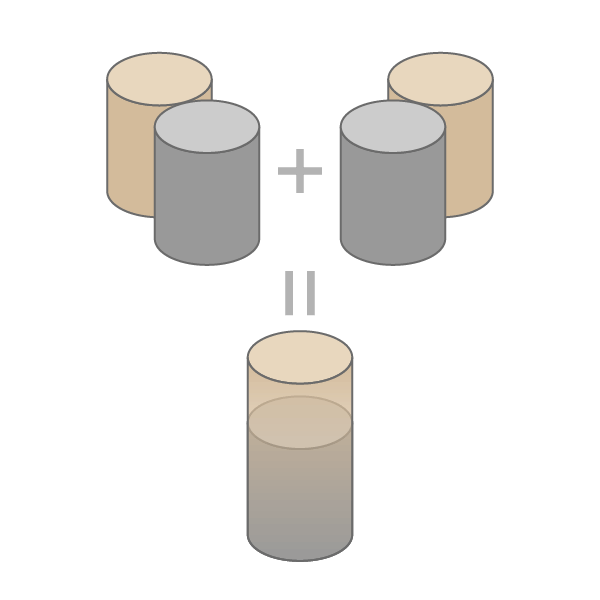
This capacity to produce optimized 3D video that is both comfortable to view (i.e. does not cause the viewer to feel discombobulated) and features high-quality visuals, depends on various factors that include the format of the 3D video, the glasses used, and the overall quality of the projector.
To recreate the experience of stereoscopic vision, where each eye sees a different image, 3D projectors rely on a solution called frame sequential 3D (or page flipping) whereby the video projected alternates between a frame to be viewed by the left eye and a frame to be viewed by the right eye and so on in sequence until the video ends. Each frame is then directed to its corresponding eye via the 3D glasses worn by the viewer, which we will discuss later on in this article.
Prior to this whole process though it is the 3D signal format that determines how each frame of the video is transmitted from the output source to the projector. As a consequence, the type of format used for the video will affect the quality of the 3D image. As of today, 3D video technology has settled on a few formats used to transmit 3D video which are supported by the vast majority of 3D ready projectors on the market, they include Side-by-Side, Top-and-Bottom (or Over-and-Under), and Frame Packing.
The Side-by-Side format takes each frame transmitted to the projector and splits it in half vertically so that the left half of the frame contains the image meant for the left eye, and the right half of the frame contains the image meant for the right eye. Once the 3D ready projector receives the transmitted frame, it then takes each image within the frame and converts them into the individual frames intended for each eye and projects them out via the frame sequential 3D projection process.

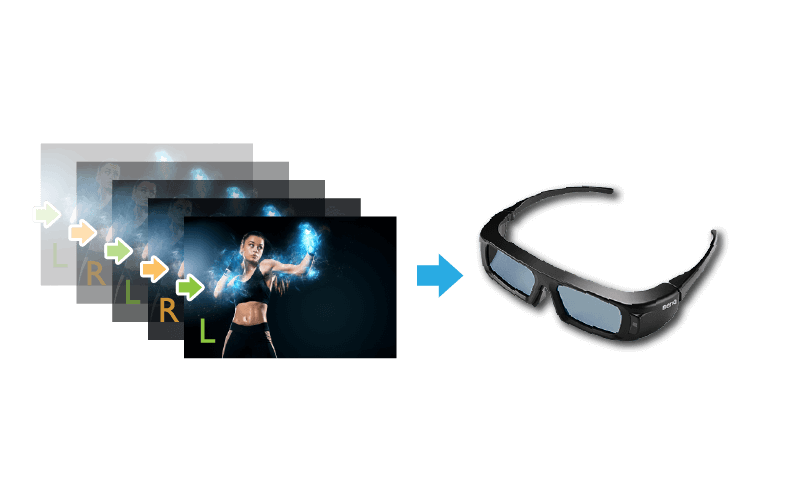
The Top-and-Bottom (or Over-and-Under) format is similar to Side-by-Side in that each transmitted frame is split in half and each half is reprocessed by the projector for frame sequential 3D projection. But in the case of Top-and-Bottom, the transmitted frame is split in half horizontally with the image for the left eye contained in the top half and the image for the right eye contained in the bottom half.
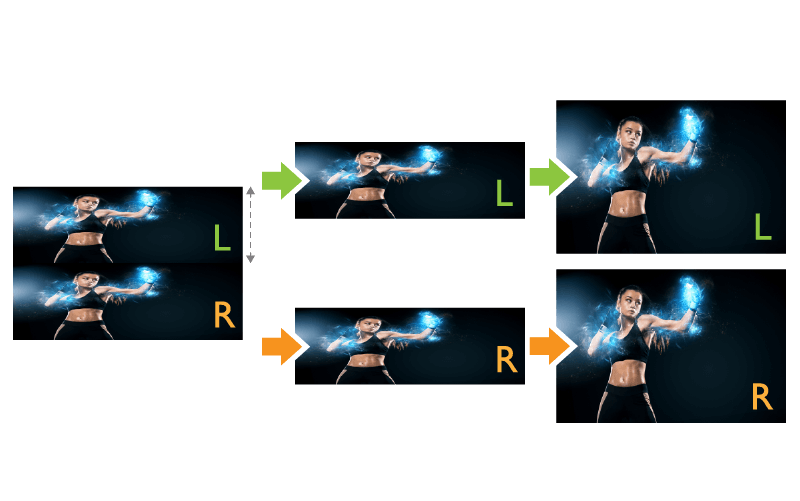

As described above both Side-by-Side and Top-and-Bottom 3D video formats involve splitting the transmitted frame in half and placing an image meant for projection in each half. What this means though is that each image’s resolution is only a fraction of the original transmission resolution, for example for a frame in Full HD resolution using the Side-by-Side format each image will only have a width of 960 pixels (half of the 1920 width of FHD). The projector then upscales these partial resolution images in the conversion process to produce the resolution of the projector.
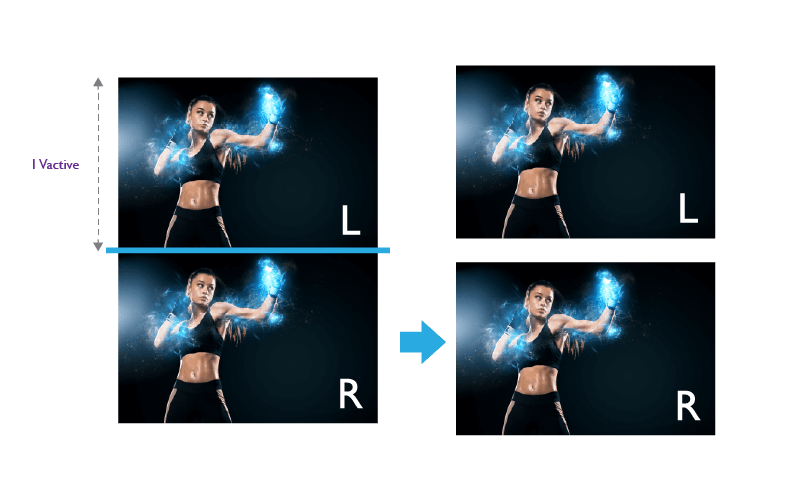

As you can guess this entire process, from splitting to upscaling, results in a degradation of the video content’s original resolution. To resolve this issue the Frame Packing format was introduced. The Frame Packing format abandons the splitting process utilized in the Side-by-Side and Top-and-Bottom formats and instead combines the two frames – one for the left eye and one for the right eye – at their full resolution into a single “packed frame”. Thus, with Frame Packing there is no upscaling and no image degradation involved.
Because Frame Packing involves frames packed with full resolution images, the data and bandwidth needed for this format is larger than those needed for Side-by-Side or Top-and-Bottom. As a result, the Frame Packing format is more commonly used in Blu-Ray 3D movies, while the Side-by-Side or Top-and-Bottom formats are typical for streaming or downloaded content.
Another major factor that affects your ability to view high-quality 3D video is your choice of 3D glasses. This is because 3D glasses are responsible for ensuring that the alternating (left, right, and so on) frames in the frame sequential 3D ecosystem are seen by the correct eye. There are 2 major types of 3D glasses on the market today: passive 3D glasses and active 3D glasses.
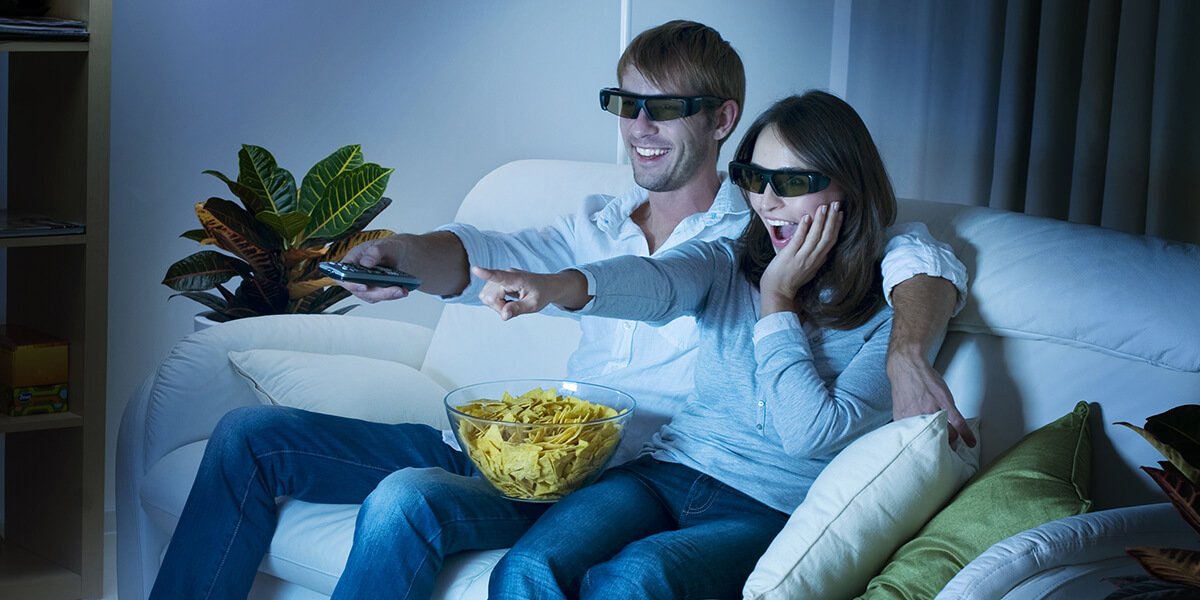
Passive 3D glasses are glasses that use polarized lenses to filter the light from the projection screen so that only a portion of the projected image is “shown” to each eye. The advantage of using Passive 3D glasses is that the glasses themselves are relatively inexpensive when compared to active 3D glasses, while the disadvantage is that due to the filtering effect the image quality associated with passive 3D glasses is poorer than the image quality of active 3D glasses. Moreover, another major thing of note for passive 3D glasses is that because they rely on a different optical principle than the frame sequential 3D system used by most projectors on the market, the use of passive 3D glasses also requires purchasing an additional polarizing module to convert the images projected by the projector into images that passive 3D glasses support. The costs associated with purchasing such a module make the use of passive 3D glasses quite prohibitive for the average consumer.
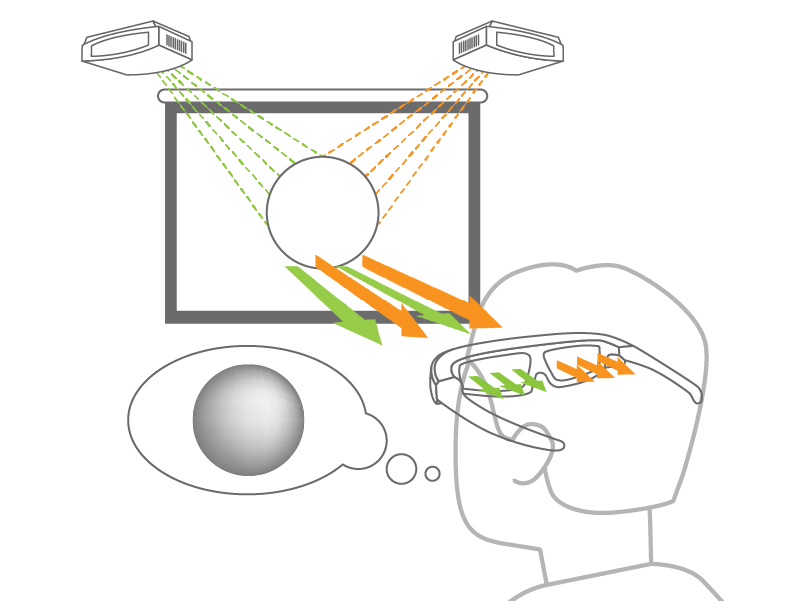
Active 3D glasses are glasses that use lenses that rapidly turn transparent or opaque depending on which frame is being projected by the 3D ready projector. In other words when a frame intended for the left eye – based on the rules of frame sequential 3D – is projected the left lens on a pair of active 3D glasses will turn transparent, while the lens on the right eye will turn opaque, and vice versa for a frame intended for the right eye. The lenses themselves are able to discern which eye each frame is intended for due to an IR sensor embedded in the glasses which receives a signal from either the projector or an external IR emitter indicating the correct eye for each frame.
Due to the technology and components employed by active 3D glasses their prices are invariably higher than passive 3D glasses. But since they are meant to work with the average 3D ready projector by design, they do not require the additional purchase of a costly polarizer module and are thus the default glasses for use with 3D ready projectors on the market today.
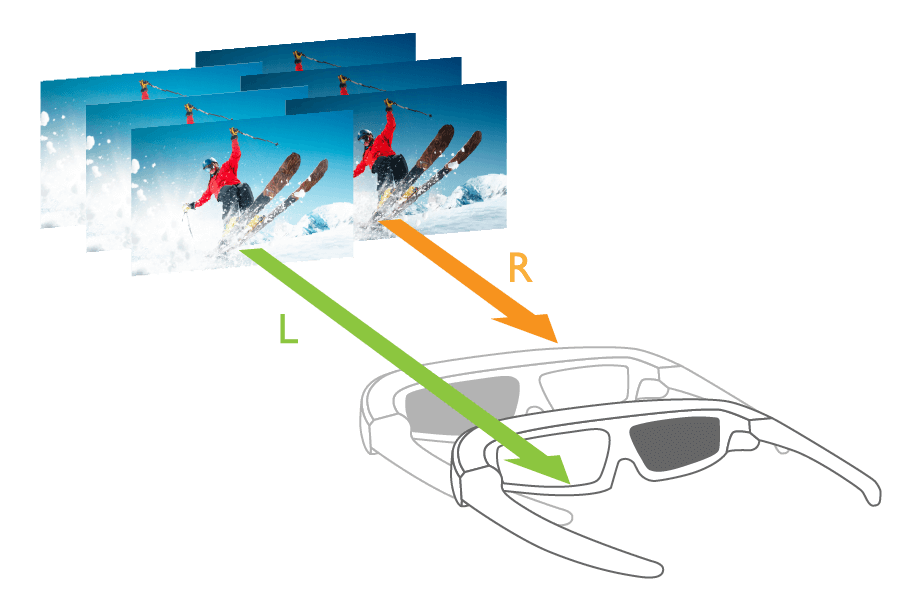

There are various factors to consider when purchasing a pair of active 3D glasses, foremost among them is making sure you purchase glasses produced by the same manufacturer as your projector. This is because most glasses are calibrated to work best with projectors of the same brand. A precisely calibrated pair of glasses ensures that the lenses work in sync with the projector and respond and react to each frame at just the right time.
Regardless of whether you purchase glasses made by the manufacturer of your projector or not, there are still many other factors you can consider that will help you select a pair of glasses that will make your 3D viewing experience more immersive including the following:
- Panel (Lens) Response Time
- Transmittance
- Viewing Angle
- Contrast (Suggested Ratio of 1,000:1 to 1,500:1)
- Lower Power Consumption
- Water Resistance
- Weight
- Ergonomics